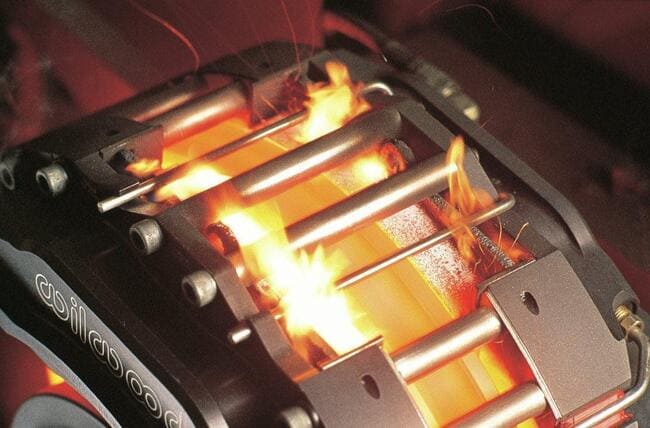
One of the most common brake disc defects is caused by overheating. In the event of overheating, the disc temperature reaches critical values, causing the brake pad to slip on the disc and reducing the efficiency of the braking system to a minimum.
How to detect brake disc overheating
Brake disc overheating can be detected by inspecting the parts. Steel is the most common material used to make brake discs. When it gets hot, the material changes color. A steel disc heated to a critical temperature glows bright orange, and after cooling it turns purple.
If the visual inspection reveals a color change in the brake disc, then you should contact a workshop directly for a comprehensive diagnosis. After finding a fault, replacing brake discs and pads is mandatory. This process can be run independently. Our detailed video tutorials will help you do it.
The causes of brake disc overheating

The main cause of brake disc overheating is friction. Since the function of the brake system is based on friction, this increases with an aggressive driving style. This leads to an increase in the temperature of the brake discs up to 600-700 °C.
Overheating can caused by the following factors:
- !Brake mechanism failure;
- ! Incorrect brake pad installation;
- ! The use of brake discs and brake pads at the end of their lifetime
- !Deformation of the brake disc;
- ! The low quality of brake discs and pads;
- ! The clamping of the brake caliper guide pins
Do not forget that the brake drums must be placed on the rear axle, since most of the load during braking affects the front brake discs. This also contributes to brake disc overheating.
What to avoid?
- Aggressive driving.
Hard braking creates more friction, which can cause the brake discs to overheat. - Deformation from impact.
If the surface of the brake discs is uneven, they must be replaced. - Use of worn brake discs and pads.
Check the condition of these components regularly and replace them if necessary. - Installation error
If installed incorrectly, the brake discs will wear out quickly and overheat. - Replacing just one brake disc.
To ensure even brake load distribution To ensure this, the brake discs on each axle should always be replaced in pairs. - Overloading of the brake system.
Try at engine brake to avoid overheating of the brake discs.
Note: If you change your brake discs, you should also change the brake pads!
